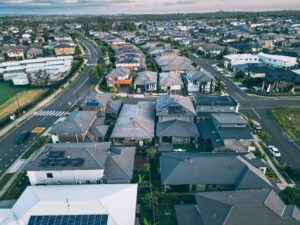Share buybacks: Are they a good sign or a waste of money?

Share buybacks are a controversial topic amongst investors. Some say it is a waste of money, others will welcome it (just because they have their own shares bought back).
We thought we’d recap what share buybacks are, some of the advantages or disadvantages and whether or not they are ultimately a good or bad thing. We’ll also look at the question of why they are less common in Australia than in other jurisdictions, particularly the USA.
What is a share buyback?
A share buyback, also known as a stock repurchase, is when a company buys back its own shares from the public market in order to reduce the number of outstanding shares on the open market. This can be done for a variety of reasons including reducing the total number of common shares available and returning cash to shareholders.
What are some of the advantages?
One advantage of a share buyback is that it can increase shareholders’ value as the decrease in the number of available shares increases scarcity, which makes existing shares more valuable. Additionally, by buying back its own shares a company can signal to investors that management considers its stock undervalued and believes that their own future prospects look positive. This kind of move can help bolster investor confidence in the company’s outlook, leading to an increase in share price.
Furthermore, companies may use repurchased shares for purposes such as employee incentive programs or executive compensation plans, allowing the business to reward key personnel without having to issue additional stock options or pay high salaries.
And, as often overlooked at this is, they reduce the impact of dilution. Issuing shares to management increases the shares on issue and reduces EPS as well as the capital gains made on individual stocks. But buying back shares can go some way toward ‘correcting the ledger’.
Returning excess cash to shareholders
Share buybacks also provide businesses with an efficient way to return excess cash to shareholders without having to declare a dividend. In this way, businesses don’t have to worry about taxation on dividends and instead can use share repurchases as a tax-efficient method of distributing profits back into shareholders’ pockets. Although this reason is less relevant in Australia given there is more favourable tax treatment of dividends in Australia compared to the USA (as we will get to). We also observe that shareholders may get accustomed to dividends and thus be disappointed if a company drops its dividends suddenly. Having a discretionary buyback reduces the risk.
Finally, by reducing the amount of outstanding stocks on the market, companies are able to reduce their capital requirement and associated expenses such as accounting fees and audit costs. And, arguably most importantly, increases their Earnings Per Share (EPS). Companies with the same profit will have different EPS figures if they have different shares on issue.
What are some of the disadvantages?
One of the major drawbacks to a share buyback is the potential for creating an artificial demand and driving up the stock price. Share buybacks can push up the share prices by reducing the total number of shares available, which then makes each individual share more valuable. This in turn, can result in overvaluation of the stock and may not be beneficial to long-term shareholders.
Another disadvantage to a share buyback is that it could potentially reduce funds for other purposes. That money used to repurchase shares could’ve been used to pay dividends. Alternatively it could be reinvested into research and development, for longer-term capital expenditure, for M&A or perhaps for emergencies.
North American airlines were notorious for share buybacks prior to the pandemic – the four biggest US carriers (Delta, United, American and Southwest) spent US$40bn during 2015 and early 2020. But as travel demand sunk, they needed US$54bn in pandemic aid. As part of a condition for the bailout, there was a ban on stock buybacks until the end of September 2022.
Buy backs mostly done by banks
According to research from CEDA (the Committee for Economic Development of Australia), ASX 200 companies spent A$36bn on share buybacks in the 3 years to February 2024. The bulk of this came from the Big Banks, that were responsible for 50% of buybacks.
Nonetheless, buybacks are not as common here as they are overseas. In 2022, companies bought back US$1.66tn of their own stock, according to S&P. In 2023, this was only $1.1tn, according to Janus Henderson, and 7 out of every $10 was from US companies. This was driven by a cutback in buybacks from big technology companies.
Why buybacks aren’t as common in Australia
We have 3 reasons and the first is Two words: Franking credits. The presence of franking credits in Australia means dividend income is not subject to double taxation, but the lack thereof in other jurisdictions means dividend income is subject to double taxation. With stock buybacks, only the shareholder pays tax, the company does not. Australian law means that investors don’t have to pay tax on dividend income, so long as the dividends have franking credits. In other jurisdictions, the company pays taxes on its profit, and investors must pay tax on that money that has already been subject to tax.
Secondly, capital gains tax treatment. Investors need to keep in mind that when your stock is bought from you, it is either a capital gain or loss. If you make a capital gain, you must pay tax on that, and the US tax system is more favourable because income tax brackets are lower to begin with (i.e. in America, the lowest threshold is 10% and top threshold is 39%) and the income thresholds adjusted for inflation. Meanwhile in Australia, income thresholds are not automatically adjusted for inflation, and the thresholds will (from FY25 onwards) range from 16% to 45%.
There are limits to how many shares can be bought back
Third, the ability for companies to buyback shares is more limited in Australia. There is the so-called 10/12 rule where companies cannot repurchase more than 10% of their ordinary shares in a 12 month period. In the US, there are limits, but not as stringent. Most pertinently, companies cannot buy more than 25% of the average daily volume.
At first glance, this seems a low limit, but it isn’t when you you think about it. 25% of average daily volume would still be substantial for the largest of companies. Apple’s 30-day average daily volume as of June 14, 2024 was 69.1M shares. 25% of this is 17.3m shares, and with a share price of ~$216, Apple could buy US$3.7bn per day. Apple recently announced a US$110bn buyback, which would only be worth 29 trading days worth of stock.
So, are share buybacks good or bad?
Ultimately it depends from company to company. The most important thing is that companies are still ensuring they have money left for difficult times. As long as this is the case, share buybacks can be a good thing for shareholders. Except of course in Australia, where the tax system is designed to avoid double taxation on dividends, and so buybacks may not be as good a thing for companies to do.
What are the Best ASX Stocks to invest in right now?
Check our buy/sell tips

Blog Categories
Get Our Top 5 ASX Stocks for FY26
Recent Posts
Diversifying Portfolios with ASX Consumer Stocks: Opportunities and Risks
The ASX 200 has delivered significant volatility recently, and market participants observing the screens in 2025 understand the turbulence firsthand.…
Is Lendlease (ASX:LLC) out of the doldrums for good?
Lendlease (ASX:LLC) has for the past several years been the classic definition of a ‘value trap’. You think a good…
Here are the 2 most important stock market taxes that investors need to be aware on
As one of two certainties in life, investors need to be aware of stock market taxes. Investors may be liable…


